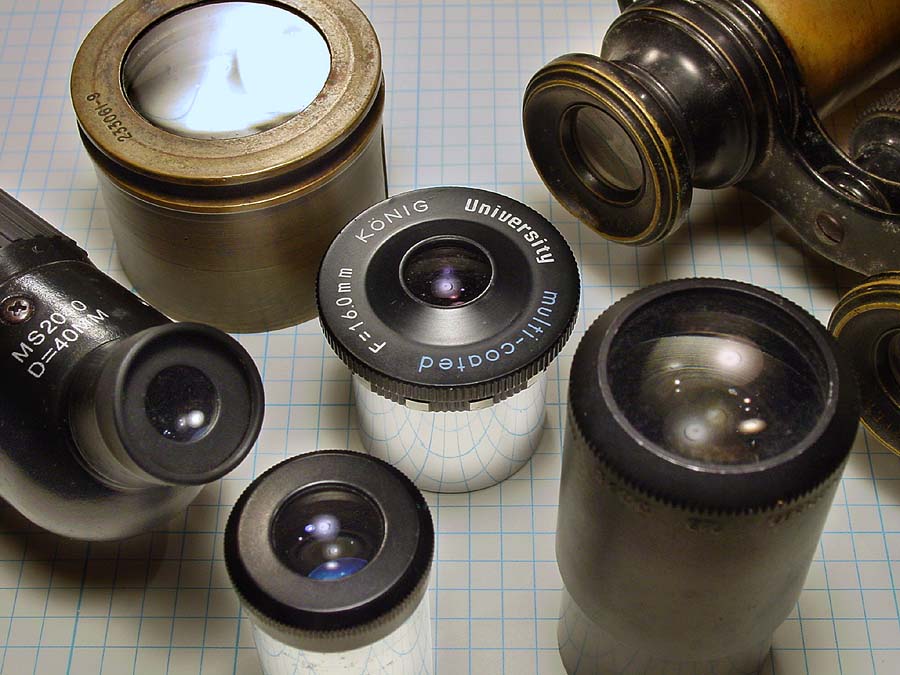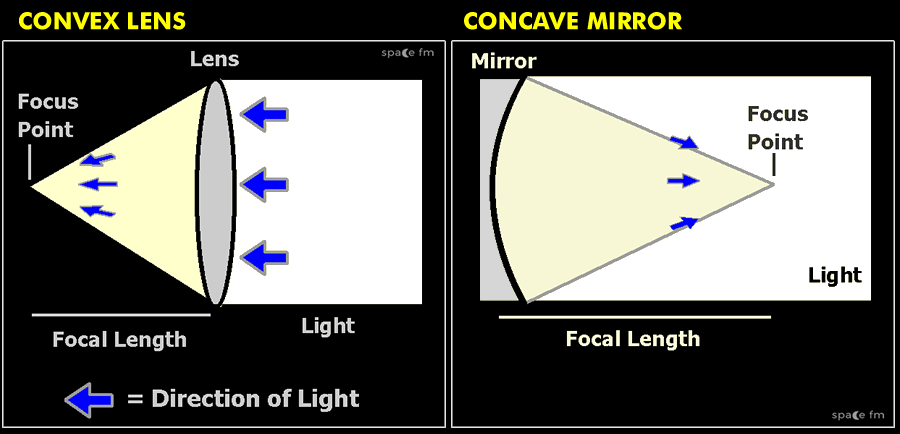Focussing Light
11.14 - Know that the human eye is limited in astronomical observations by its small aperture and limited sensitivity in low light11.15 - Understand how the objective element of a telescope captures and focuses light so that the image can be magnified by an eyepiece
11.17 - Understand how simple telescopes can be made by combining an objective (lens or mirror) with an eyepiece
We each have our own set of 7 millimetre telescopes - our eyes. Because of the size of our pupils we can only see a certain amount of light and variation in colour especially in low light. To see further we must rely on binoculars and telescopes.
If you look through a lens you will see that it is in focus only when your eye is close to it. When the lens is combined with another and their distances increased the image is larger when in focus. This is how a telescope works.
Telescopes let us see the finer details of the Moon and planets and other objects in the sky that we otherwise would not be able to see.
Telescopes have a lens, mirror or both to enlarge images by collecting light.
Typically a lens or mirror is placed at the end of a tube. The light is magnified or reflected to an eyepiece which shows an enlarged image of what is being viewed.
A convex lens will enlarge an image and viewed in focus by another convex lens. A larger concave mirror can capture light and focus it to a point where it is viewed by a convex lens.
With a standard telescope there will be different eyepieces that can magnify the view further.


 | © All Rights Reserved |
| © All Rights Reserved |